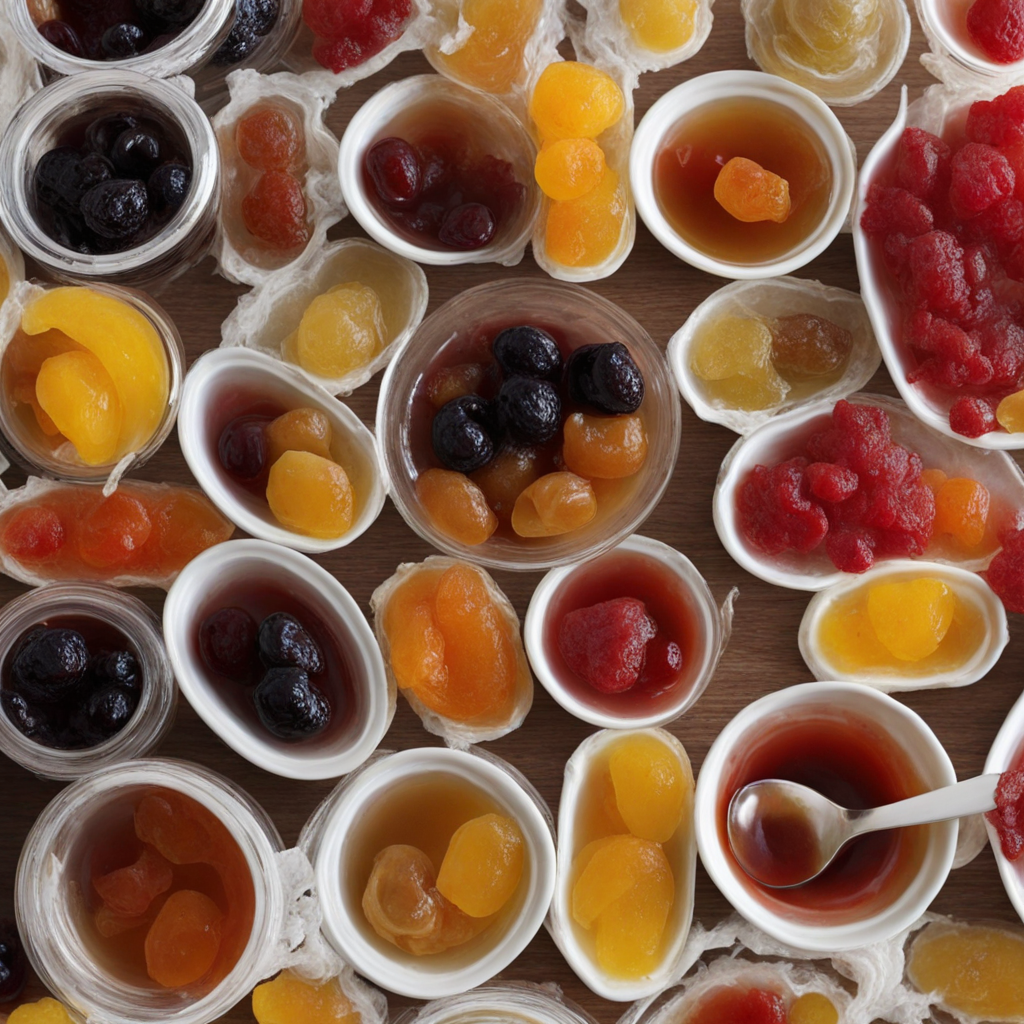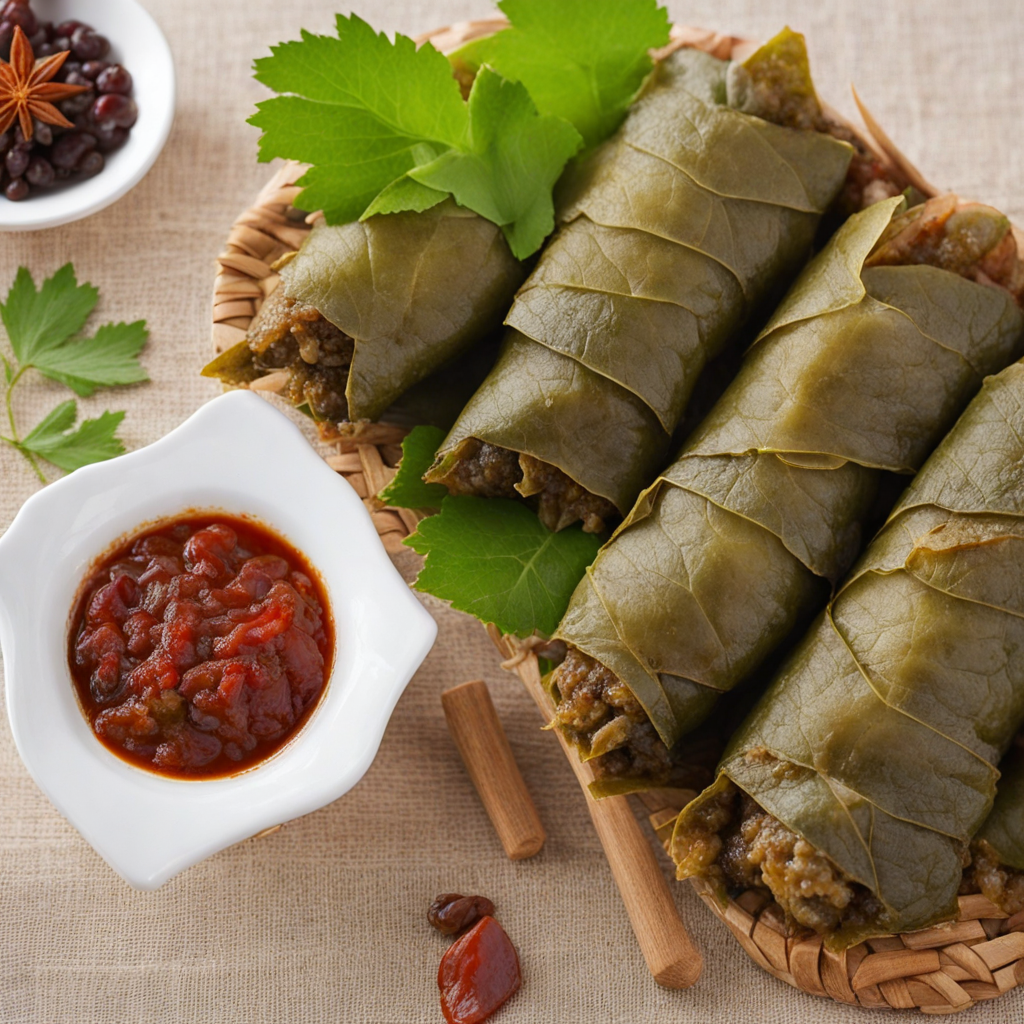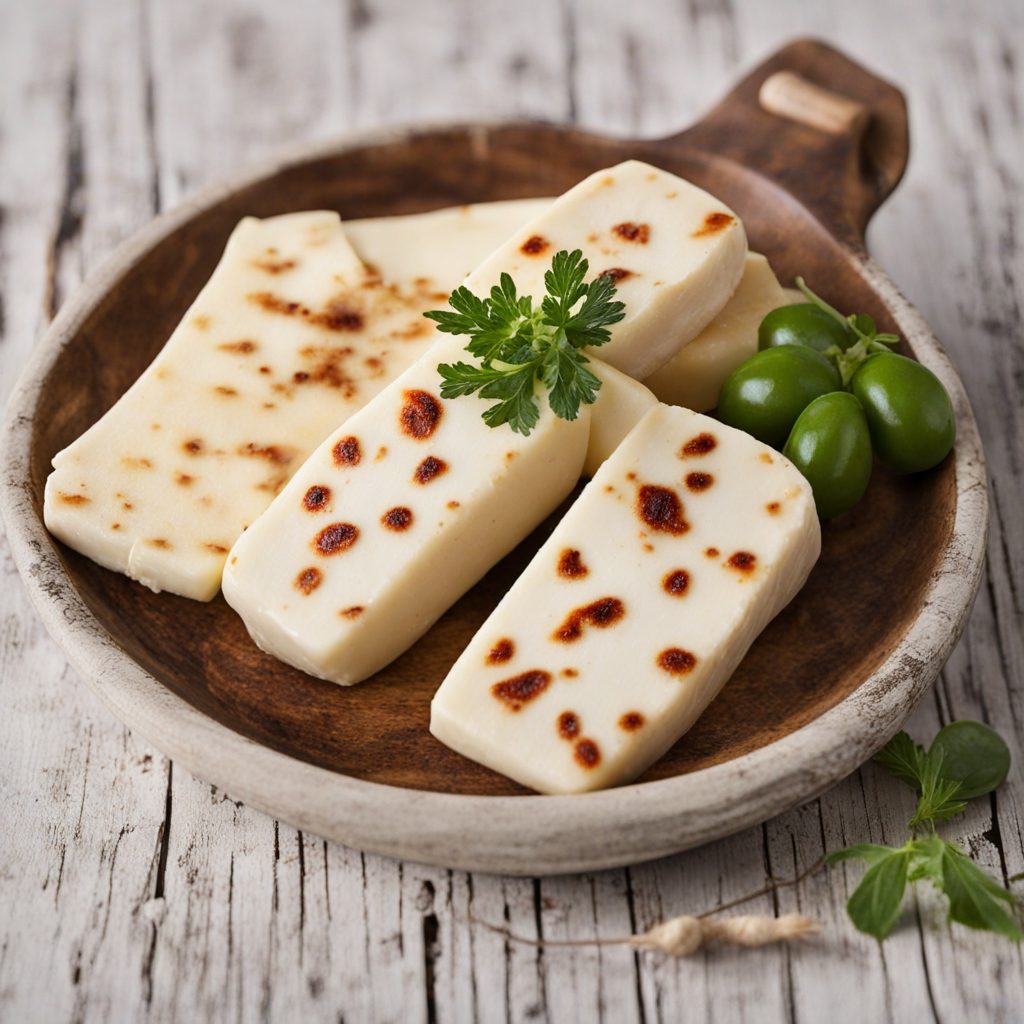Glyko tou koutaliou
Glyko tou koutaliou, often referred to as spoon sweet, is a traditional Cypriot delicacy that showcases the island's rich agricultural heritage. This delightful treat is made by preserving various fruits, nuts, or even vegetables in a sugar syrup, resulting in a thick, glossy confection that can be enjoyed in numerous ways. The fruits commonly used include cherries, figs, and citrus peels, each contributing its own unique flavor and texture to the mix. The process of creating glyko tou koutaliou involves slow cooking the chosen ingredients in a sugary syrup, allowing the natural flavors to intensify and meld beautifully while achieving a delightful balance between sweetness and acidity. What sets glyko tou koutaliou apart is not just its taste but also its presentation. Traditionally served in small jars or on a spoon, it is often accompanied by a glass of water or a cup of coffee, making it a cherished hospitality gesture in Cypriot homes. The vibrant colors of the preserved fruits, glistening in their syrup, make for an inviting sight, while the rich, fruity aroma adds to the overall sensory experience. Each bite offers a burst of flavor that reflects the essence of the fruit used, often leaving a lingering sweetness that entices you to savor it slowly. Beyond being a dessert, glyko tou koutaliou can also be used creatively in a variety of culinary applications. It can be drizzled over yogurt or ice cream, incorporated into cakes and pastries, or even used as a topping for pancakes and waffles, introducing a taste of Cyprus into your breakfast or dessert. With its unique combination of flavors and the cultural significance it carries, glyko tou koutaliou is more than just a sweet treat; it’s a taste of tradition and history that invites you to explore the culinary landscape of Cyprus.
How It Became This Dish
The Sweet History of Γλυκό του Κουταλιού: A Cyprus Delight Origins: The Sweet Beginnings Γλυκό του κουταλιού, or “spoon sweet,” is a traditional Cypriot confection that has been enjoyed for generations. Its origins can be traced back to the Byzantine era, a time when the island of Cyprus was a melting pot of cultures, traditions, and culinary influences. The word "γλυκό" translates to "sweet," and "κουταλιού" means "spoon," aptly describing the dessert's method of serving—typically a small spoonful presented on a plate or in a small glass. The practice of making spoon sweets is believed to have originated from the need to preserve fruits and vegetables in a time before refrigeration. The method of cooking fruits in sugar syrup allowed for their long-term storage, ensuring that Cypriots could enjoy seasonal produce throughout the year. The basic recipe involves simmering fruits with sugar until a thick syrup forms, often infused with spices such as cinnamon or clove, and sometimes lemon juice for acidity. The result is a shimmering, jewel-like confection that can be served alone or alongside yogurt, ice cream, or as part of a dessert tray. Cultural Significance: A Symbol of Hospitality In Cyprus, Γλυκό του κουταλιού is more than just a treat; it holds great cultural significance. It is traditionally offered to guests as a gesture of hospitality, symbolizing warmth and welcome. This practice is deeply rooted in Cypriot culture, where hospitality is regarded as a sacred duty. When visitors arrive at a Cypriot home, they can expect to be greeted with a small plate of spoon sweets, often accompanied by a glass of cold water or a cup of coffee. This simple yet profound offering reflects the island's values of generosity and kindness. The choice of which fruit to use for the spoon sweet can vary, often reflecting the season and what is available. Common fruits include cherries, apricots, figs, walnuts, and citrus fruits like oranges and lemons. Each fruit brings its unique flavor and texture to the sweet, showcasing the island's rich agricultural heritage. The diversity of ingredients highlights Cyprus's position as a crossroads of different cultures, influenced by centuries of trade and interaction with neighboring regions. Development Over Time: From Tradition to Modernity As time progressed, the preparation of Γλυκό του κουταλιού evolved, but its core essence remained unchanged. In the past, families would gather during the harvest season to make large batches of spoon sweets, turning the process into a communal event filled with laughter, stories, and the sharing of recipes. These gatherings not only strengthened family bonds but also ensured the preservation of culinary traditions. In the 20th century, as lifestyles changed and urbanization increased, the practice of making Γλυκό του κουταλιού at home began to decline. However, the craft was revitalized in the late 20th and early 21st centuries as a renewed interest in traditional foods emerged. Artisanal producers and local markets began to flourish, celebrating the local ingredients and age-old techniques. Many families returned to making their own spoon sweets, passing down recipes through generations, ensuring that the art of preserving fruits was not lost. Today, Γλυκό του κουταλιού is celebrated in Cypriot culture, with festivals dedicated to this beloved sweet. The annual “Spoon Sweet Festival” in the town of Kato Paphos showcases the diversity of spoon sweets, featuring competitions and tastings that draw both locals and tourists alike. These events not only promote the culinary heritage of Cyprus but also serve as a platform for local artisans to share their creations and stories. Modern Variations and Innovations While traditional recipes remain popular, modern variations of Γλυκό του κουταλιού have emerged, reflecting contemporary tastes and global culinary trends. Innovative chefs and home cooks have begun experimenting with unconventional fruits and flavor pairings. For instance, tropical fruits like mango and pineapple are now making appearances, often combined with spices like cardamom or ginger to create a unique twist on the classic. Moreover, the rise of health-conscious eating has influenced the preparation of spoon sweets. Some artisans have started using less sugar, incorporating natural sweeteners like honey or agave syrup. Others are exploring the use of organic and locally sourced ingredients, aligning with a broader movement towards sustainability and environmental consciousness. Culinary Pairings and Serving Suggestions Γλυκό του κουταλιού is incredibly versatile and can be enjoyed in various ways. Traditionally served on its own, it can also be paired with Greek yogurt for a delightful breakfast or dessert. The contrast of the sweet syrup against the tangy yogurt creates a harmonious balance that highlights the flavors of the fruit. Another popular way to enjoy spoon sweets is by using them as a filling for pastries, such as baklava or galaktoboureko. The rich, flaky layers of pastry combined with the luscious sweetness of the syrup create a decadent treat that tantalizes the taste buds. Additionally, spoon sweets can be drizzled over pancakes or waffles, adding a touch of Cypriot flair to a classic breakfast. Conclusion: A Timeless Sweet Tradition Γλυκό του κουταλιού is a testament to the rich culinary heritage of Cyprus—a sweet that transcends time and generations. It embodies the island's agricultural bounty, cultural values, and the art of hospitality. As it continues to evolve, this beloved confection remains rooted in tradition while embracing modern influences, ensuring that it will be cherished by future generations. In a world increasingly dominated by fast food and convenience, the slow, deliberate process of making Γλυκό του κουταλιού serves as a reminder of the joys of craftsmanship and the importance of community. Whether enjoyed on its own, paired with other dishes, or offered as a gesture of welcome, spoon sweet is more than just a dessert; it is a delicious morsel of Cypriot identity, a sweet legacy that continues to be celebrated and savored.
You may like
Discover local flavors from Cyprus







